Yijun Yan
Non-Destructive Peat Analysis using Hyperspectral Imaging and Machine Learning
May 03, 2024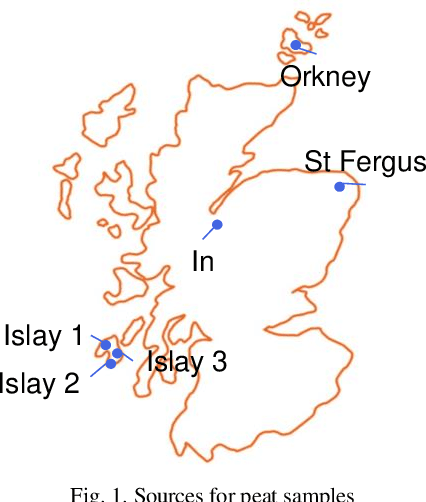

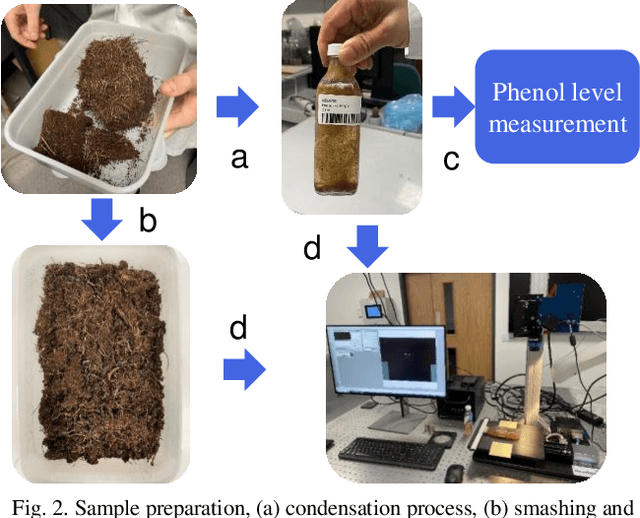
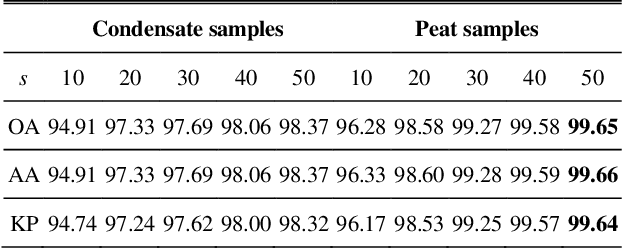
Abstract:Peat, a crucial component in whisky production, imparts distinctive and irreplaceable flavours to the final product. However, the extraction of peat disrupts ancient ecosystems and releases significant amounts of carbon, contributing to climate change. This paper aims to address this issue by conducting a feasibility study on enhancing peat use efficiency in whisky manufacturing through non-destructive analysis using hyperspectral imaging. Results show that shot-wave infrared (SWIR) data is more effective for analyzing peat samples and predicting total phenol levels, with accuracies up to 99.81%.
Siamese Residual Neural Network for Musical Shape Evaluation in Piano Performance Assessment
Jan 04, 2024



Abstract:Understanding and identifying musical shape plays an important role in music education and performance assessment. To simplify the otherwise time- and cost-intensive musical shape evaluation, in this paper we explore how artificial intelligence (AI) driven models can be applied. Considering musical shape evaluation as a classification problem, a light-weight Siamese residual neural network (S-ResNN) is proposed to automatically identify musical shapes. To assess the proposed approach in the context of piano musical shape evaluation, we have generated a new dataset, containing 4116 music pieces derived by 147 piano preparatory exercises and performed in 28 categories of musical shapes. The experimental results show that the S-ResNN significantly outperforms a number of benchmark methods in terms of the precision, recall and F1 score.
Segmentation Framework for Heat Loss Identification in Thermal Images: Empowering Scottish Retrofitting and Thermographic Survey Companies
Aug 07, 2023



Abstract:Retrofitting and thermographic survey (TS) companies in Scotland collaborate with social housing providers to tackle fuel poverty. They employ ground-level infrared (IR) camera-based-TSs (GIRTSs) for collecting thermal images to identi-fy the heat loss sources resulting from poor insulation. However, this identifica-tion process is labor-intensive and time-consuming, necessitating extensive data processing. To automate this, an AI-driven approach is necessary. Therefore, this study proposes a deep learning (DL)-based segmentation framework using the Mask Region Proposal Convolutional Neural Network (Mask RCNN) to validate its applicability to these thermal images. The objective of the framework is to au-tomatically identify, and crop heat loss sources caused by weak insulation, while also eliminating obstructive objects present in those images. By doing so, it min-imizes labor-intensive tasks and provides an automated, consistent, and reliable solution. To validate the proposed framework, approximately 2500 thermal imag-es were collected in collaboration with industrial TS partner. Then, 1800 repre-sentative images were carefully selected with the assistance of experts and anno-tated to highlight the target objects (TO) to form the final dataset. Subsequently, a transfer learning strategy was employed to train the dataset, progressively aug-menting the training data volume and fine-tuning the pre-trained baseline Mask RCNN. As a result, the final fine-tuned model achieved a mean average precision (mAP) score of 77.2% for segmenting the TO, demonstrating the significant po-tential of proposed framework in accurately quantifying energy loss in Scottish homes.
PTGCF: Printing Texture Guided Color Fusion for Impressionism Oil Painting Style Rendering
Jul 27, 2022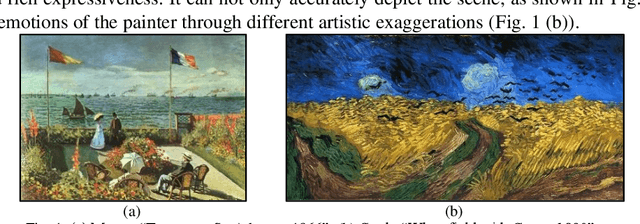
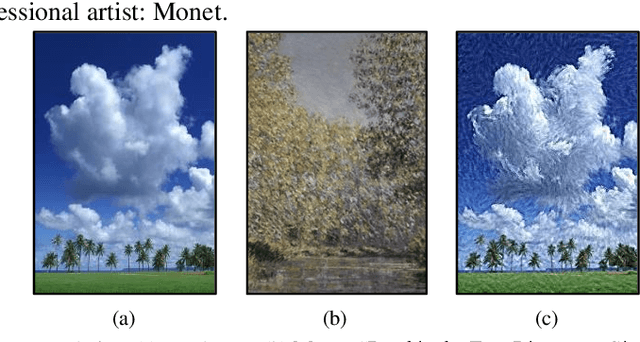
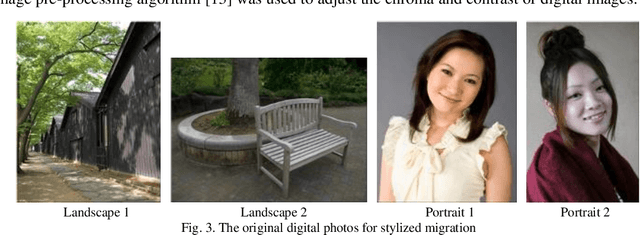
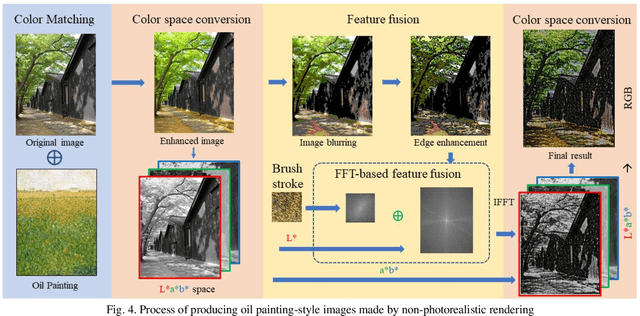
Abstract:As a major branch of Non-Photorealistic Rendering (NPR), image stylization mainly uses the computer algorithms to render a photo into an artistic painting. Recent work has shown that the extraction of style information such as stroke texture and color of the target style image is the key to image stylization. Given its stroke texture and color characteristics, a new stroke rendering method is proposed, which fully considers the tonal characteristics and the representative color of the original oil painting, in order to fit the tone of the original oil painting image into the stylized image and make it close to the artist's creative effect. The experiments have validated the efficacy of the proposed model. This method would be more suitable for the works of pointillism painters with a relatively uniform sense of direction, especially for natural scenes. When the original painting brush strokes have a clearer sense of direction, using this method to simulate brushwork texture features can be less satisfactory.
Nondestructive Quality Control in Powder Metallurgy using Hyperspectral Imaging
Jul 26, 2022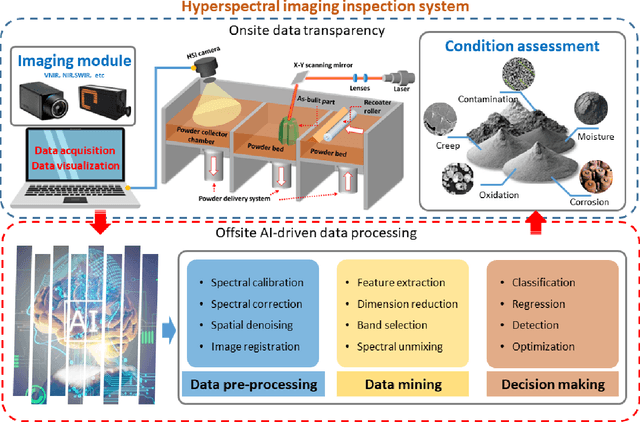
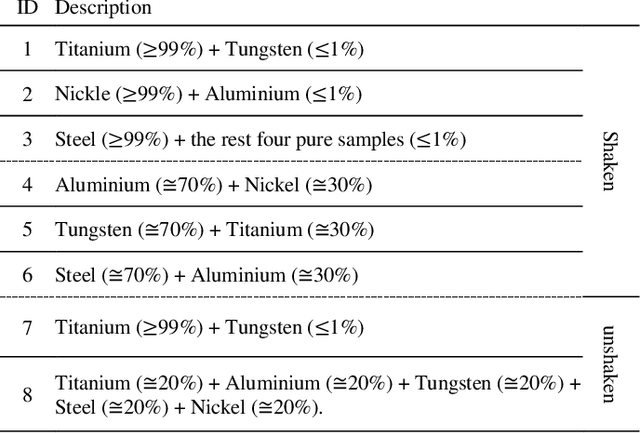
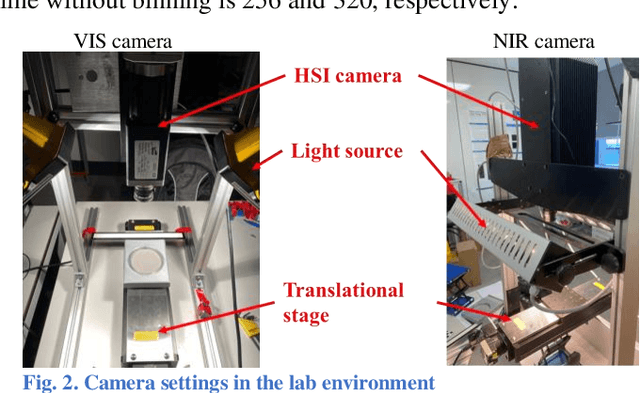

Abstract:Measuring the purity in the metal powder is critical for preserving the quality of additive manufacturing products. Contamination is one of the most headache problems which can be caused by multiple reasons and lead to the as-built components cracking and malfunctions. Existing methods for metallurgical condition assessment are mostly time-consuming and mainly focus on the physical integrity of structure rather than material composition. Through capturing spectral data from a wide frequency range along with the spatial information, hyperspectral imaging (HSI) can detect minor differences in terms of temperature, moisture and chemical composition. Therefore, HSI can provide a unique way to tackle this challenge. In this paper, with the use of a near-infrared HSI camera, applications of HSI for the non-destructive inspection of metal powders are introduced. Technical assumptions and solutions on three step-by-step case studies are presented in detail, including powder characterization, contamination detection, and band selection analysis. Experimental results have fully demonstrated the great potential of HSI and related AI techniques for NDT of powder metallurgy, especially the potential to satisfy the industrial manufacturing environment.
Domain-Adaptive Text Classification with Structured Knowledge from Unlabeled Data
Jun 20, 2022



Abstract:Domain adaptive text classification is a challenging problem for the large-scale pretrained language models because they often require expensive additional labeled data to adapt to new domains. Existing works usually fails to leverage the implicit relationships among words across domains. In this paper, we propose a novel method, called Domain Adaptation with Structured Knowledge (DASK), to enhance domain adaptation by exploiting word-level semantic relationships. DASK first builds a knowledge graph to capture the relationship between pivot terms (domain-independent words) and non-pivot terms in the target domain. Then during training, DASK injects pivot-related knowledge graph information into source domain texts. For the downstream task, these knowledge-injected texts are fed into a BERT variant capable of processing knowledge-injected textual data. Thanks to the knowledge injection, our model learns domain-invariant features for non-pivots according to their relationships with pivots. DASK ensures the pivots to have domain-invariant behaviors by dynamically inferring via the polarity scores of candidate pivots during training with pseudo-labels. We validate DASK on a wide range of cross-domain sentiment classification tasks and observe up to 2.9% absolute performance improvement over baselines for 20 different domain pairs. Code will be made available at https://github.com/hikaru-nara/DASK.
Nondestructive Testing of Composite Fibre Materials with Hyperspectral Imaging : Evaluative Studies in the EU H2020 FibreEUse Project
Nov 04, 2021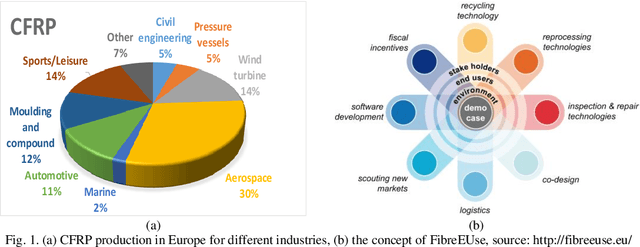
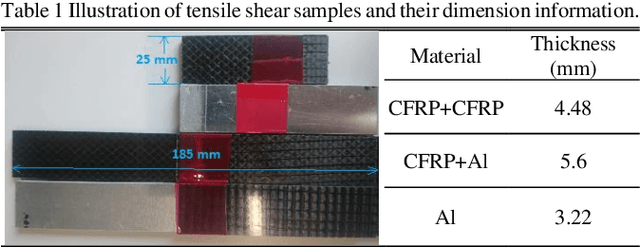
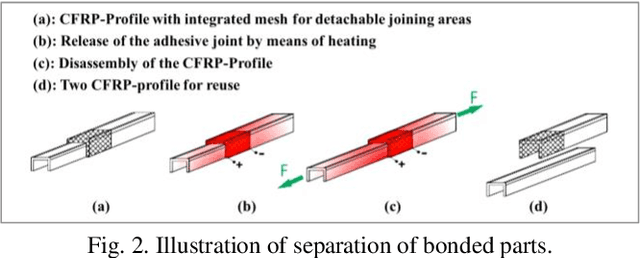
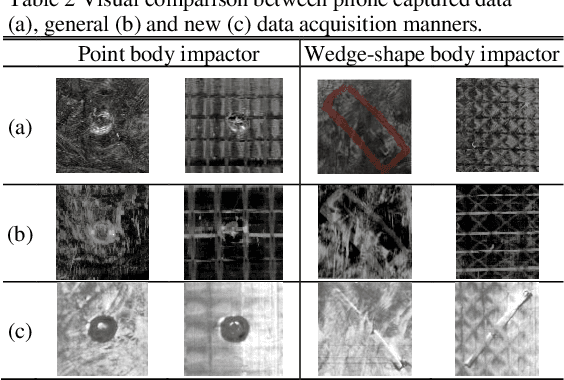
Abstract:Through capturing spectral data from a wide frequency range along with the spatial information, hyperspectral imaging (HSI) can detect minor differences in terms of temperature, moisture and chemical composition. Therefore, HSI has been successfully applied in various applications, including remote sensing for security and defense, precision agriculture for vegetation and crop monitoring, food/drink, and pharmaceuticals quality control. However, for condition monitoring and damage detection in carbon fibre reinforced polymer (CFRP), the use of HSI is a relatively untouched area, as existing non-destructive testing (NDT) techniques focus mainly on delivering information about physical integrity of structures but not on material composition. To this end, HSI can provide a unique way to tackle this challenge. In this paper, with the use of a near-infrared HSI camera, applications of HSI for the non-destructive inspection of CFRP products are introduced, taking the EU H2020 FibreEUse project as the background. Technical challenges and solutions on three case studies are presented in detail, including adhesive residues detection, surface damage detection and Cobot based automated inspection. Experimental results have fully demonstrated the great potential of HSI and related vision techniques for NDT of CFRP, especially the potential to satisfy the industrial manufacturing environment.
 Add to Chrome
Add to Chrome Add to Firefox
Add to Firefox Add to Edge
Add to Edge